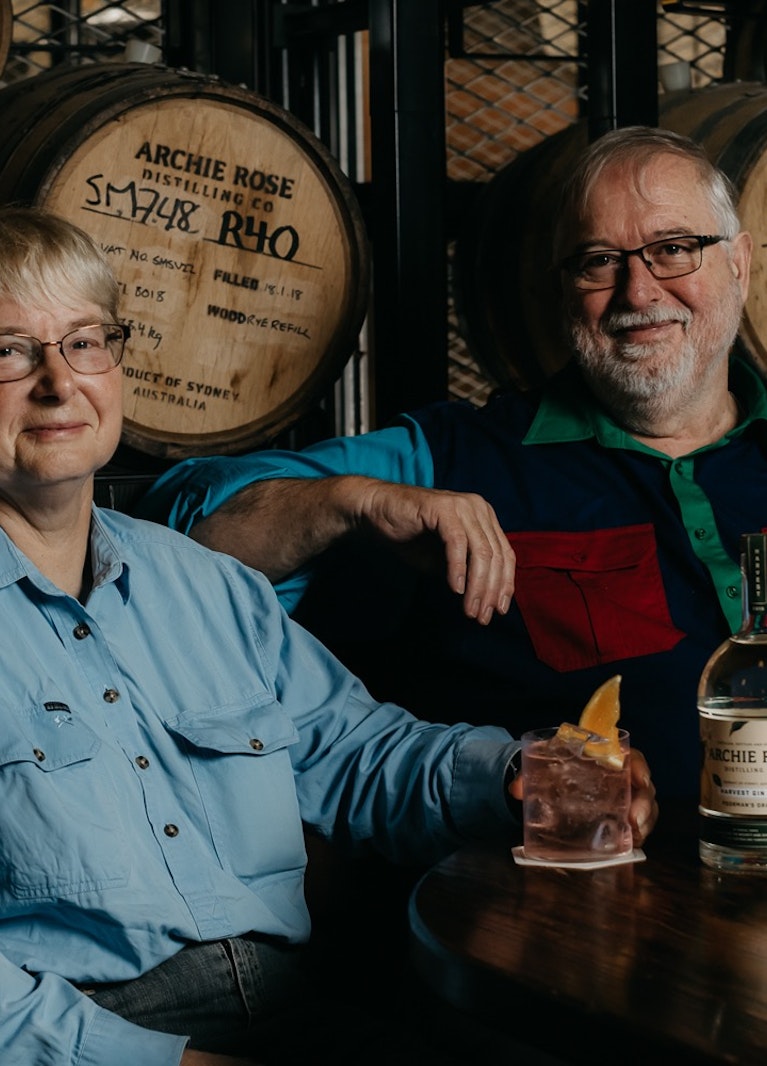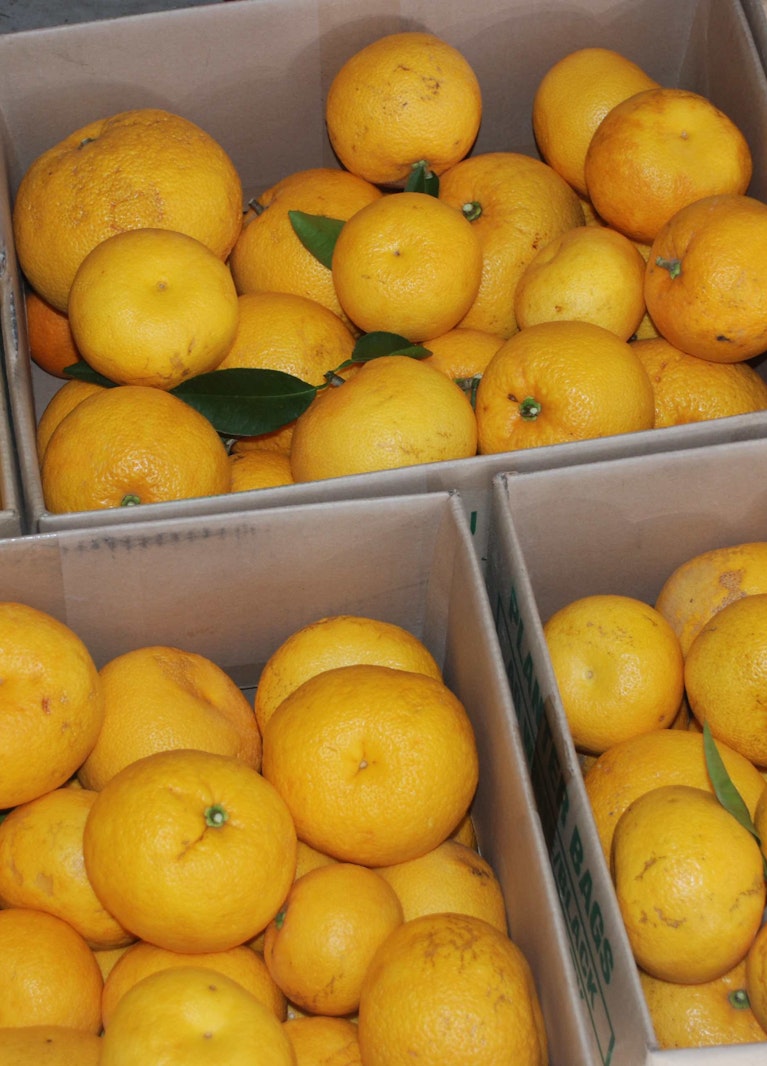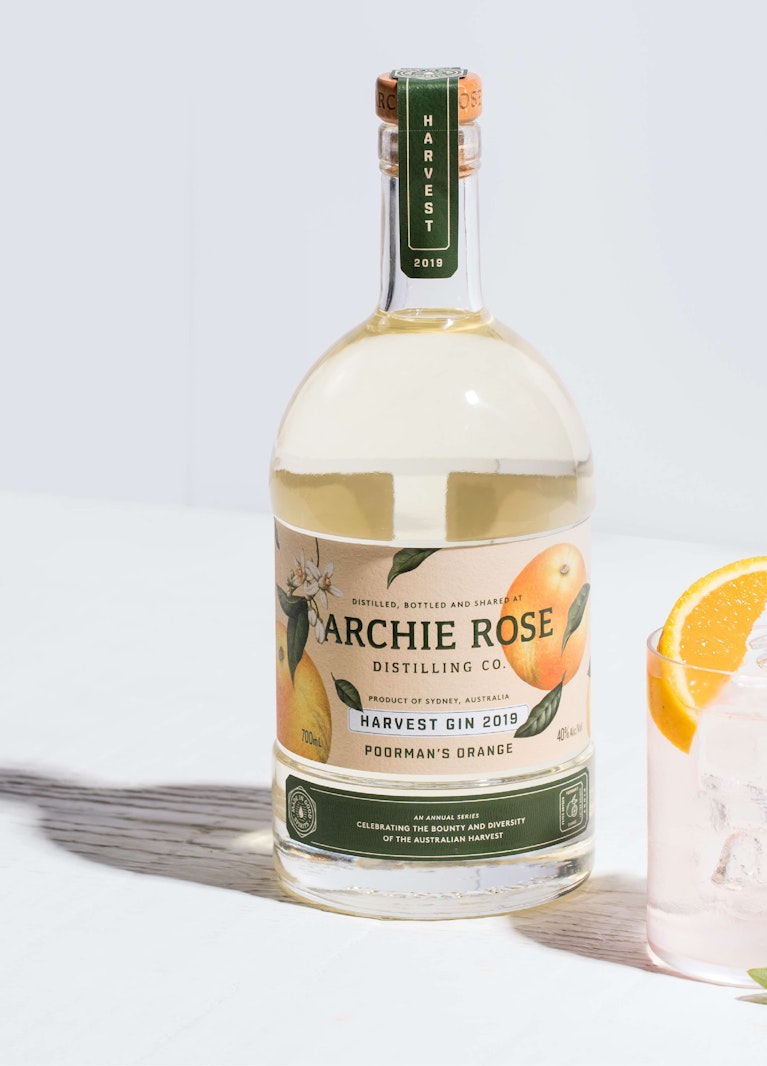What is Poorman’s orange?
Not all oranges are created equal. Some aren’t created oranges at all – the Poorman’s orange, with its unique and complex flavour, thick pith and sweet almost-tropical tasting flesh, is actually a cross between the pomelo and tangerine. It’s this rare and unassuming fruit that captivated our minds and spirits, featuring as the hero distillate in our latest gin release, Harvest Gin 2019 Poorman's Orange – also the first spirit from a new vintage series that celebrates the bounty and diversity of Australia’s annual harvest. Grower Peter Dryden, along with his wife Elsa Payne based in their Wombat Bottoms farm in Wollombi, NSW, give us the inside scoop...

What is Poorman’s orange?
Contrary to its name, the Poorman’s orange resembles a grapefruit in shape and size, with a balanced acidity that sets it apart from other citrus. Dryden likens it to a fine wine, where its flavour develops over time, “When you first bite into it, you taste sweetness, like a mandarin or tangerine. Your second bite might reveal tropical fruit, say guava or pineapple, with a final lingering grapefruit tang.” Its enigmatic flavour is one of the reasons Dryden was so drawn to the fruit, “We found our first tree in Elsa’s parents’ garden in Turramurra 45 years ago,” he explains, “We’d never tried anything like it and it tasted bloody good.”
Where does it come from?
The Poorman’s origin story is clouded. Some historians claim it travelled from China to Australia in the 19th century as a rootstock. Others believe it originated closer to home, first catalogued in 1820 by a New South Wales nursery. Regardless of origin, it’s clear the Poorman’s is a uniquely Australian fruit. “Elsa and I travelled around the world looking for something like it,” says Dryden. “In Bhutan, we found a citrus that was similar in flavour but still too sour. Same for Japan where they have the sudachi and Norfolk Island’s New Zealand Grapefruit.” Despite its intriguing flavour, you won’t find Poorman’s orange at your local farmer’s market or green grocer – it remains relatively rare with little commercial availability in Australia.

How should you enjoy it?
“My favourite way is to eat it straight from the tree,” says Dryden, “Cut the fruit and the juice inevitably runs everywhere – we save it all and add it to berries to macerate overnight in the fridge.” He suggests slicing them like a pomelo – it’s easy to separate the segment wall and pith, revealing large, juicy sections of fruit ready to use in sweet or savoury dishes and drinks. With a gentle acidity and sweetness, it’s capable of cutting through rich flavours like a bartender’s paring knife, “Up at the farm, we make a pan-fried duck breast, finished with Poorman’s marmalade and fresh slices of fruit,” Dryden says. Jock Zonfrillo, head chef at award-winning Adelaide restaurant Orana, used Poorman’s at his recent Restaurant Orana's 2019 Sydney residence. We shared Dryden’s 2019 harvest with Zonfrillo, using the remaining peel from his dish of smoked orange segments with 12-hour roast lamb dressing and river mint to distil in our latest release. While the unique citrus adds lift and kick to rich flavours, it’s equally delicious on light, bright dishes such as the kingfish ceviche from Alberto’s Lounge, or in a citrus-based G&T, “I’m not much of a mixologist, but I’m quite partial to a G&T – in the right circumstances of course,” Dryden laughs.
When it comes to Poorman’s, you can’t compare oranges to oranges. With notes of mandarin, sherbet and grapefruit, Poorman’s orange is unlike anything we’ve tried before – inspiring not only the crafting of our latest gin, but the creation of the Harvest Series itself; an opportunity to highlight and celebrate the diversity and quality of Australian produce every year.
